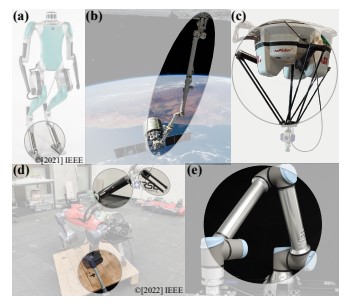Mehmet C. Yildirim, Edgar Pisano, Mazin Hamad, Valentin Le Mesle, Abdalla Swikir, and Sami Haddadin
Proceedings of IEEE-RAS International Conference on Humanoids Robots (Humanoids)

Abstract
The demand for robotic applications involving dynamic motions in environments with frequent contact is steadily rising. Since these applications also require human-friendly, safe, and robust collaborative operations, the need for more dynamically capable lightweight robots is rising. Although the current trend is focused on elastic joint-rigid link robot models, the contact task performance can be improved with better modelling and identification of link structures. In this paper, we explore the key design parameters of links that affect the robot at the system level, by creating a relationship between the high-level task requirements and the component level ones, i.e., the links. By considering the system’s life and application needs, we proposed a three-layer design routine for robot links under dynamic loadings. Moreover, we validated the proposed link structure with Finite Element Analysis (FEA) and Experimental Modal Analysis (EMA). The precision of the analytical overall model is validated, and additional acting effects are identified by comparing the EMA with the FEA results. The results show that the flanges and boundary conditions of the link have direct effects on the overall system performance, and these effects can be either controlled or identified to achieve a requirement matching system for the link design.
@inproceedings{mc2023hums,
title={A Task-Aware Lightweight Link Design Framework for Robots Under Dynamic Loading},
author={Yildirim, M.C. and Pisano, E. and Hamad, M. and Le Mesle, V. and Swikir, A. and Haddadin, S.},
booktitle={2023 IEEE-RAS International Conference on Humanoid Robots},
year={2023}
}

